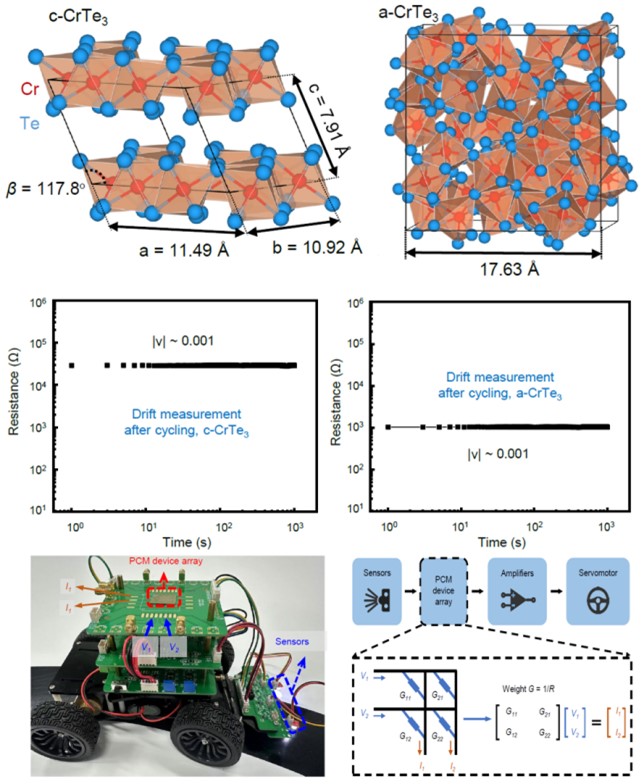Nature Materials published the research article “Amorphous phase-change memory alloy with no resistance drift” online on October 1, 2025.
Phase change memory utilizes the resistance difference between the amorphous and crystalline phases of chalcogenides to achieve data storage. However, amorphous materials typically exhibit spontaneous structural relaxation. For phase-change materials (such as the commercial germanium-antimony-tellurium, GST), the resistance of the amorphous phase will spontaneously drift over time. This raises huge challenges for precise multi-level programming and significantly affects the accuracy of phase-change neuromorphic computing. Additionally, the structural relaxation of amorphous materials exhibits complex and variable uncertainties under varying ambient temperatures, this leads to the difficulty in applying phase-change neuromorphic computing technology to the edge computing scenarios with variable environmental conditions.
To address this issue, the team from the Center for Alloy Innovation and Design (CAID) at the State Key Laboratory for Mechanical Behavior of Materials at Xi’an Jiaotong University analyzed the atomic-scale mechanism of the structural relaxation behavior in amorphous phase-change materials. They identified that the resistance drift primarily stems from the evolution of local structural defect density and the degree of Peierls distortion in the amorphous phase over time and temperature. Based on this, they designed a chromium-tellurium amorphous alloy, CrTe3, in which the local structure consists almost entirely of perfect octahedra. The octahedral structure shows no significant difference between long and short bonds, resulting in minimal structural relaxation and unchanged band structure. This fundamentally eliminates resistance drift. Subsequently, they deposited CrTe3 thin films by using magnetron sputtering, and experimentally confirmed that the amorphous films exhibit no significant resistance drift across a wide temperature range from -200°C to 165°C.

The team further collaborated with the team led by Researcher Zhitang Song from the Shanghai Institute of Microsystem and Information Technology, Chinese Academy of Sciences, and verified that the CrTe3 device exhibits no significant resistance drift even after 100,000 cycles. The team achieved stable multi-level storage using a hybrid opto-electro-thermal testing platform. They also developed a vehicle based on a CrTe3 array, enabling stable automatic path-tracking functionality. This path-tracking vehicle functioned very well even after heating the CrTe3 array at 150 °C for over 1 hour. This innovative design of phase-change materials fundamentally resolves the resistance drift issue in phase-change memory devices, providing a key material platform for the development of high-precision phase-change neuromorphic computing devices.
The first authors are Dr. Xiaozhe Wang, Dr. Ruobing Wang and Dr. Suyang Sun, the corresponding authors are Prof. Jiang-Jing Wang, Prof. En Ma and Prof. Wei Zhang. Xi’an Jiaotong University is listed as the first author's institution and the sole corresponding author's institution.
Paper link:https://www.nature.com/articles/s41563-025-02361-0


